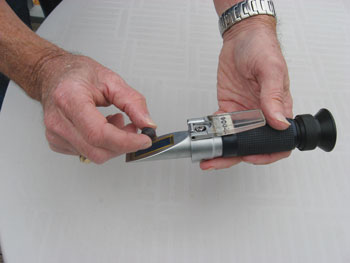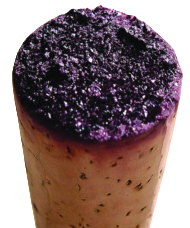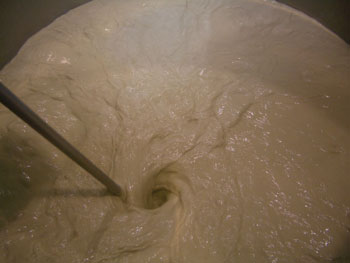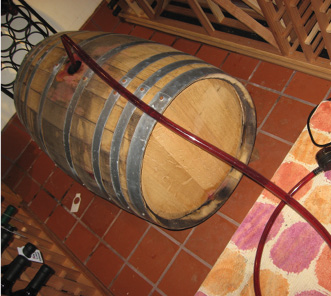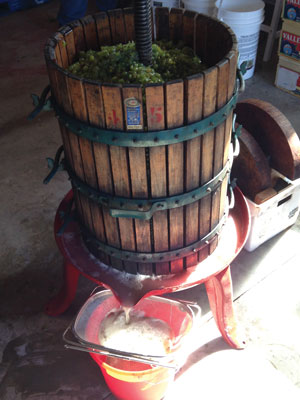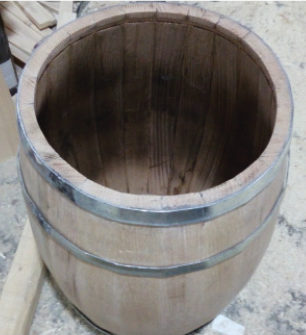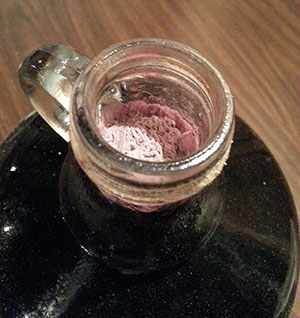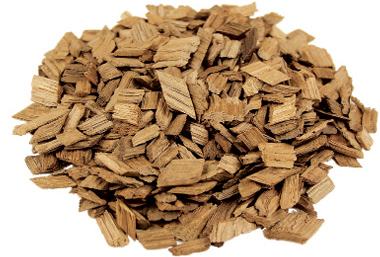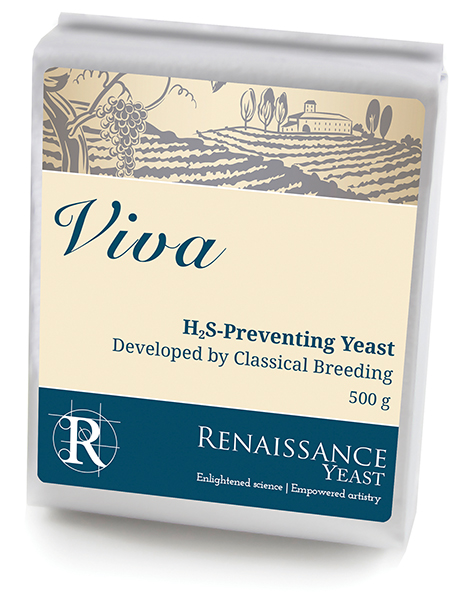Topic: Wine-Wizard
Measuring Brix in Fermentation, Drinking From Brass, and Yeast Options
I would argue that the rapidity with which the sugar is consumed (and the density is lowered) is almost as important as the level of sugar itself . . .
Yeast Options
Good for you for thinking “outside the box” and going with a different yeast choice. I love both D80 and D254 for Syrah. D80 was isolated by the ICV in 1992 from
Red Wine Sediment and What To Consider When Selecting A Yeast
What you’re experiencing is the precipitation over time of all sorts of complex tannins and colored compounds.
White Crystals After Crushing
I’ve had a similar experience — both with having to pick gapes at sub-optimal times (curse you, weather!) as well as having that rough white residue on my crush equipment. The residue,
Malolactic Fermentation Timing
I’m a little old school when it comes to malolactic fermentation, but it’s always served me well. There are some winemakers who try to get a jump on malolactic (ML) completion and
Tartrate Crystals, Blending Stuck Wine, Malolactic Timing
In my experience, doing a traditional cold stability where you chill the wine down and then filter off any precipitation won’t shift the acidity enough to notice it in the taste.
Mellowing a Big Wine
Even my “purist” winemaking friends usually aren’t opposed to doing a little egg white fining when it comes to smoothing out the rough edges on their big reds. It’s an ancient and
Understanding Bentonite, Refractometers vs. Hydrometers, and Mellowing A Big Wine
Most folks I talk to say that sodium bentonite and calcium bentonite are interchangeable in winemaking.
Chlorine In My Wine
Oh dear. I fear that your wine has been contaminated not just with chlorine, but with the dreaded TCA, or tri-chloroanisole aroma defect. Also known as the “corked” aroma, TCA is the
Malolactic Problems and Cleaning with Chlorine
Some of the SO2 gas created by the sulfur wick certainly will transfer into the wine as sulfur dioxide.
Wine Press Mold Growth and Magnesium Sulfate Vineyard Sprays
It’s very possible this mold bloom was caused by a change in the weather or a change in your cellar environment.
Is Potassium Sorbate In A Port Necessary?
I’m with you. If I was making a Port-style wine and it was 20% alcohol and 100–150 g/L residual sugar (10–15%) I would forgo the potassium sorbate altogether. I am not a
First-Time Barrel Soaking, Wine Flower and High Brix Grapes
It is entirely normal for the first soaking of a barrel to produce a dark-colored water.
Sniffing The Cork, Screwcap Closures and the Facts About Wine Headaches
Interestingly, a cork may smell “tainted” and the wine below it might be just fine, or, better said the wine in the bottle may be below your TCA threshold.
The Facts About Wine Headaches
I’ve seen a few of these kinds of articles (ahem, I mean advertisements) floating around on the internet and it always results in an epic Wine Wizard “facepalm” upon reading. For starters,
Screwcap Closures
Those are all great questions, let me see which order I’ll tackle them in. Firstly, we discuss corks for the most part on the pages of WineMaker Magazine not because they’re the
Sniffing The Cork
You are more in the right here than your brother; when buying wine at a restaurant you really just smell and taste the wine. If the wine smells and tastes fine to
What’s This? and Calculating Proper Yeast Pitching
To quote one of my favorite UC-Davis professors, the newly-retired Dr. Linda Bisson, “No human pathogen can survive in wine.”
Yeast Pitching Rates
Good for you for branching out. Apple cider has astronomically increased in popularity in the United States in the past few years and I see an increasing number of wineries trying their
Submerge Those Oak Chips, Wine Yields and a Copper Problem
I actually prefer using a sock or some kind of bag rather than just having chips float loose on the surface.
Dealing With A Copper Problem
That’s too bad that you added more copper sulfate than you intended to. Copper is an effective, legal, and ancient (the Romans knew about its curative powers in winemaking) tool for reducing
Some Reductive Resolutions, Using Essential Oils, and Residual Sugar
You might want to try gradually introducing a little more oxygen into your winemaking process, especially early on when wines are more resilient to shifts in redox potential. Reductive off-odors may come from many sources, but thanks to new yeast strains available to winemakers, fermentation doesn’t need to be one of them.
Calculating Residual Sugar
That’s certainly an interesting question and one for which the short answer is “no such equation exists.” The longer answer attempts to help explain why, even though you think you should have
Making White Zinfandel
Funny you ask this question as I’ve just now got three tanks full of 2016 Monterey Pinot Noir rosé fermenting in the winery. White Zinfandel, contrary to what some folks think, is
Dealing With Volatile Acidity
Not knowing any more information than you give above, it’s tough to make specific recommendations so I’ll start with the general ones. Whenever you suspect VA (volatile acidity, or the production of
